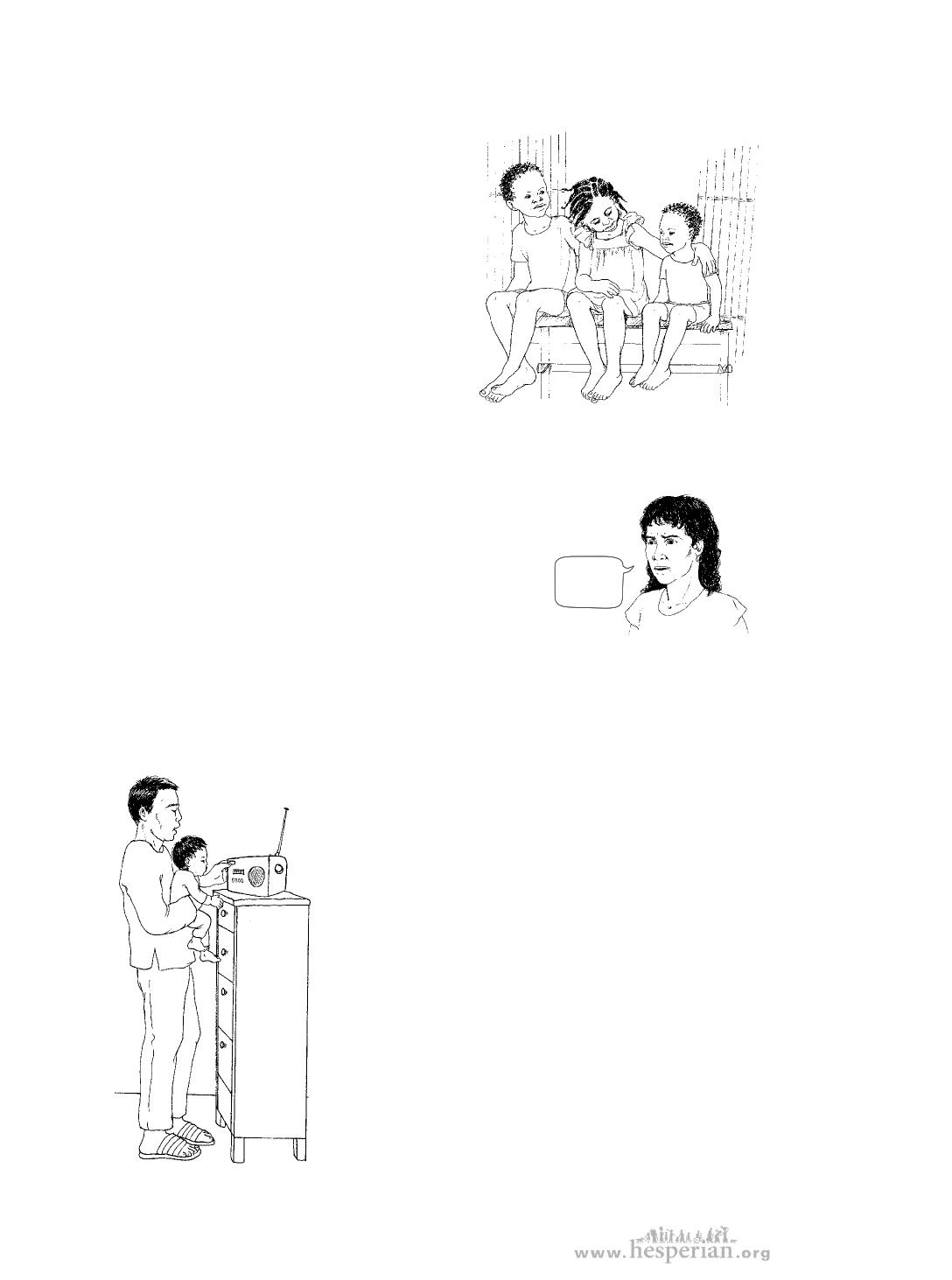
30 guidelines for teaching language
Use gestures, touch, and
expressions on the face
All people use body movements,
touch, and expressions on the face
to help people understand what they
want to say. Children often use touch
to communicate with each other.
Children who cannot hear well find
touch extremely useful. A touch will
help communicate your care and
concern in a way that nothing else
can. Sometimes movements and looks
can take the place of a word or sign. At other times they add information
to words and signs.
Help your child by using your body and face to
communicate as much as possible. First, try to notice
how you already do this. Then look for ways to
add to what you do.
Good
girl!
Try to make sure that the messages you send
with your body and face are the same as
those you send with words and signs. If the
messages of your face do not match your
words, your child will be confused.
Maria’s angry expression
sends a different message
than her kind words. This
is confusing.
Reduce background distractions
as much as possible
Background distractions, such as other
children playing near your child, can make
activities more difficult or even impossible
to do. You can help by finding a place with
few distractions. Try to get rid of any noises
that are not necessary. When a room is noisy,
a child who cannot hear well finds it more
difficult to understand what is being said.
This father is shutting
off the radio before
playing with his son.
Helping Children Who Are Deaf (2004)